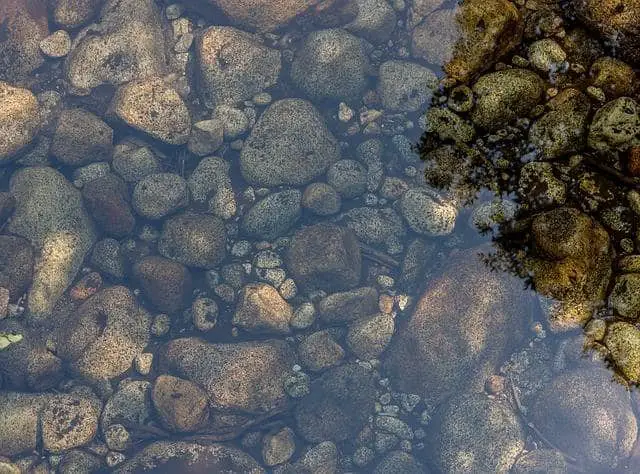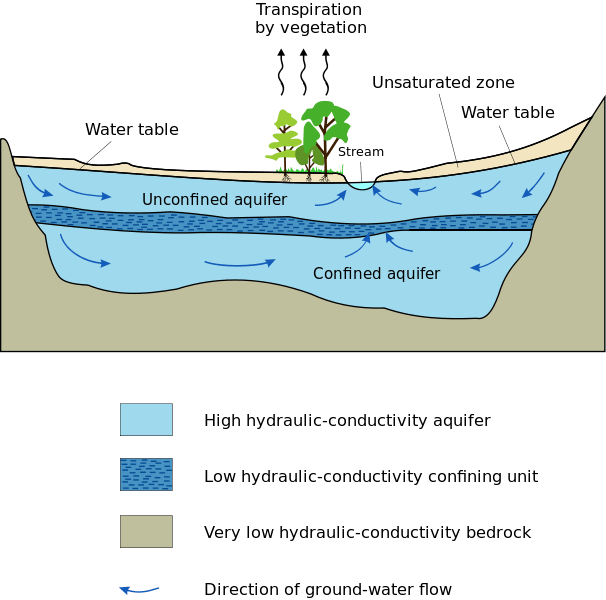What is Groundwater? – An Introductory Guide
Compiled by Stanley Udegbunam || Nov 23, 2020
On a first guess, one would think that groundwater is any water obtained from the ground right?
But there’s actually more to it than just the surface meaning.
This guide gives you a better explanation, an insight into how groundwater is formed and also highlights it’s basic importance.
Let’s get started…
AFRILCATE
WHAT IS GROUNDWATER?
Groundwater is water present beneath Earth’s surface in soil pore spaces, underground bedrocks and in the fractures of rock formations.
Groundwater is the largest source of freshwater for mankind and approximately 30% of the freshwater on Earth is groundwater.
Groundwater is a part of the natural water cycle and its highly susceptible to pollution.
It is stored in underground rock layers called aquifers and moves slowly through the different rock layers.
An aquifer is a body of porous rock, sediments or unconsolidated materials (gravel, sand, or silt) saturated with groundwater.
Water moves through these materials because they have large connected spaces that make them permeable.
They are called water-bearing rocks and they easily transmit water to wells and springs.
Groundwater is fed by precipitation and can resurface to replenish streams, rivers, and lakes.
Groundwater is used as drinking water by more than 50 percent of the people in the United States.
It’s also largely utilized by people who lives in rural areas.
Nevertheless, the largest use for groundwater is to irrigate crops.

HOW IS GROUNDWATER FORMED?
Groundwater forms when rain water infiltrates the soil through precipitation and percolates downwards until it reaches the water table.
This process is called recharge.
The water is able to move underground through the rock and soil due to connected pore spaces.
Some types of soils allow more water to infiltrate than others depending on the soil’s characteristics.
During recharge, water is pulled downward into the earth by gravity through two zones.
The upper zone, called the zone of aeration, is where a mixture of water and air fills the pore spaces.
Below the zone of aeration is the zone of saturation, where the pore spaces are completely filled by water.
The upper boundary of the zone of saturation is known as the water table.

Aquifers are found in the area saturated with water.
They are the underground layers of rock that holds the groundwater.
There are two types of aquifer:
- Unconfined aquifer
- Confined aquifer
An unconfined aquifer has a layer of permeable clay or bedrock above it therefore it’s connected to the surface through pore spaces while a confined aquifer has impermeable bedrock above.
Confined aquifers are only accessed using a well or where the aquifer meets the surface.
The amount of time that groundwater remains in aquifers is called its residence time.
This can vary widely from few days or week to thousands of years.
Confined aquifers are only accessed using a well or where the aquifer meets the surface.
The amount of time that groundwater remains in aquifers is called its residence time.
This can vary widely from few days or week to thousands of years.
Nevertheless, both aquifer type sits on an impermeable bedrock layer.
Unconfined aquifers can recharge nearby streams, during times of drought.
Rainwater can take years or even decades to reach the water table.
While rivers can flow at the rate of several kilometers per hour, groundwater can move as slowly as a meter per year.
This means it can take several thousands of years for underground aquifers to become replenished.

Groundwater is recharged by precipitation, snowmelt, or water seepage from other sources.
Groundwater is also recharged through farmland irrigation and leaks from water supply systems.
Natural outflows of groundwater take place through springs and riverbeds when the groundwater pressure is higher than atmospheric pressure in the vicinity of the ground surface.
In areas where groundwater is utilized faster than its natural replenishing rate, man-made recharge method becomes a necessary option for balancing the water levels.
This man-made recharge means is called artificial groundwater recharge.
We’ve recently published a guide on this man-made approach to tackling water shortage in aquifers.
See it here: Artificial Groundwater Recharge
The major threat to groundwater is pollution by fertilizers, pesticides, and waste from septic tanks, all of which can seep down into aquifers from the soil surface.

IMPORTANCE OF GROUNDWATER
Out listed below are the various importance of groundwater.
- It is the main source of water for irrigation and the food industry.
- In some rural areas, groundwater accounts for 100% of their drinking water.
- Globally, irrigation accounts for more than 70% of total water withdraw (both surface and groundwater).
- Approximately 500,000 new residential wells are constructed annually, according to NGWA.
- For the environment, groundwater plays a very important role in keeping the water level and flow into rivers, lakes and wetlands.
- Groundwater also plays a very relevant role in sustain navigation through inland waters in the drier seasons.
- By discharging groundwater into the rivers, it helps keeping the water levels higher.
- t’s estimated by the U.S. Geological Survey that about 30 percent of U.S. streamflow is from groundwater, although it is higher in some locations and less in others.
- It a natural process and an integral part of the water cycle.

young boys expressing happiness and having a good time at the river.
DO YOU KNOW?
There are 4 different underground units that contribute to the formation of groundwater.
They are: Aquifers, Aquitard, Aquiclude, and Aquifuge.
DO YOU KNOW?
There are 4 different underground units that contribute to the formation of groundwater. They are:
Aquifers, Aquitard, Aquiclude, and Aquifuge.

